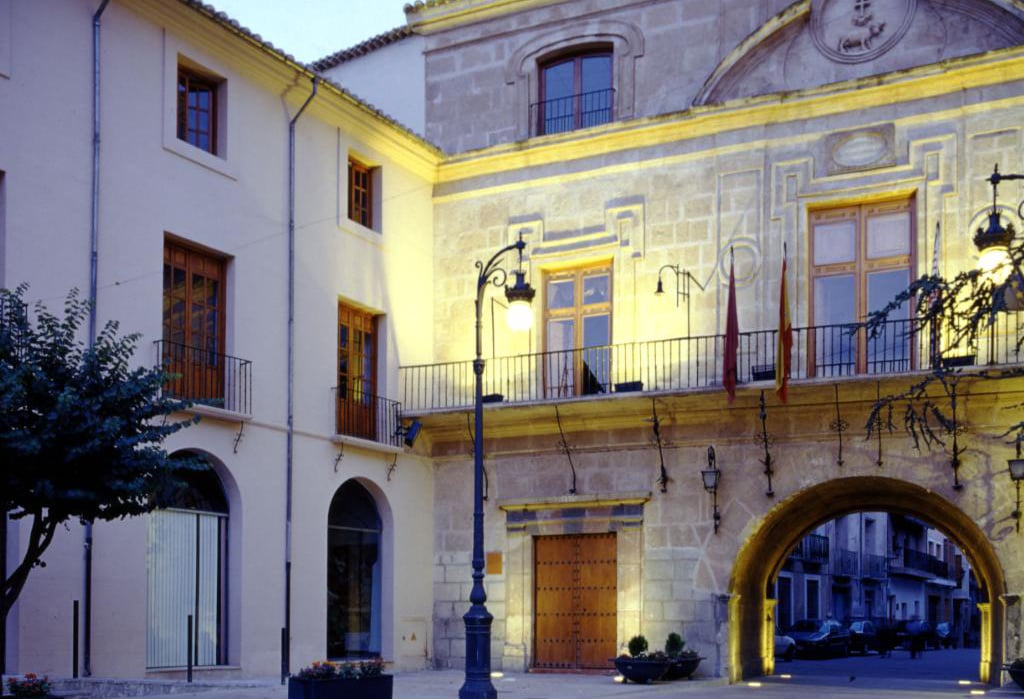The history castle of Caravaca de la Cruz
Situated at an altitude of approximately 675 meters, the Castle of Caravaca de la Cruz is one of...
Por: Turismo Región de Murcia en 9/23/24 2:10 PM

Caravaca de la Cruz is a city with more than a thousand and one places to discover, and in this article, from the Region of Murcia's tourist board, we show you 8 of the most amazing ones:
The walled area: The walled enclosure of Caravaca de la Cruz, dating back to the 12th century, has undergone various transformations over the years. Currently, 14 towers of different shapes and sizes can be appreciated, with the Torre Chacona being the oldest, showcasing a typically Arabic architectural style. Since the 15th century, this tower has been recognized as a tribute to the fortress. Throughout its history, it has belonged to the Order of the Temple and later to the Order of Santiago, playing a military role during key moments such as the War of Succession.

Chapel of the Cross: This sacred space houses the Holy and True Cross of Caravaca, guarded by the emblems of the Orders of the Temple and Santiago. Inside the chapel, which is welcoming and tranquil, access is granted every half hour, except during Mass, when the relic is displayed for public adoration. It is important to mention that during the first five days of May, in celebration of the Patron Saint Festivals, the Holy Relic is moved to the city, bringing it closer to residents and tourists who celebrate in its honor.
The city's bullring: Built in the second half of the 19th century over the old Franciscan monastery of Santa María de Gracia, this bullring was inaugurated on September 28, 1880, and has witnessed numerous events over the years, including bullfights and concerts. Its façade, adorned with horseshoe arches and stuccos reflecting the Muslim architectural tradition in Caravaca, along with neo-Arab style elements, makes this coliseum an undeniable landmark in the city. After several periods of neglect, it was reopened in 1926, 1966, and 1999, regaining its splendor. Today, magnificent bullfights take place, while it is also used for concerts, theater, and recitals.

16th-Century roman inscription: The archaeological complex of La Encarnación, located just a few kilometers from Caravaca, is a significant testament to the Roman past in the region. Built over a previous Iberian temple and an extensive stone quarry, it is one of the most important sites in the Region of Murcia, including a sanctuary from the late Republican period, constructed over an earlier Iberian temple, and a stone quarry. In addition to La Encarnación, other sites in the municipality, such as the Cerro de la Fuente de Archivel and the oil mill of Fuente de la Teja, underscore the intense Roman occupation in this area of Murcia.
It is situated in a privileged tourist area outdoors for contemplation.
The Temple (Chapel of the Bathhouse): This baroque-style building, with a hexagonal plan, is known for being the starting point of the festivities in honor of the city's patroness every May 3rd. Constructed between 1762 and 1801 by architect José López, it features a dome covered with Arabic tiles and a lantern that allows light to enter. Located in a privileged outdoor tourist area, it is an ideal spot to admire its beauty.

Tower of the templars: Located in Las Fuentes del Marqués, 2 km from the urban center, this tower houses the Nature Interpretation Center. Its name comes from the Marquises of San Mamés and the abundance of springs in the area. Although its origins are uncertain, it is believed to have been built on the remains of an earlier tower. This space combines high landscape, cultural, and ecological value, attracting tourists and locals who enjoy its natural beauty and well-preserved environment.
The town hall: Originally designed by Jaime Bort, the project was modified by Fray Juan de Sta. Teresa and Juan García Galán, and executed by Antonio del Campo. Construction was completed in 1762, and it has since served as the home of local government. With three floors, the building is notable for its ornamental simplicity, except on its façade. Inside, the Plenary Hall houses a copy of an oil painting by Rosales depicting the will of Isabella the Catholic, a work currently displayed in the Prado Museum.

Monument to the cyclist pilgrim: This sculpture, created by Antonio Campillo, welcomes pilgrims arriving in the Holy City. Standing over two meters tall, it represents a cyclist carrying a staff with the Cross of Caravaca, and it was inaugurated in 2010 as a gift from the Caja de Ahorros del Mediterráneo. The work aims to honor those seeking jubilee in Caravaca, reinforcing the welcoming spirit of the city and its inhabitants.
Situated at an altitude of approximately 675 meters, the Castle of Caravaca de la Cruz is one of...
Choosing the best viewpoint in Caravaca de la Cruz is a difficult task, as each one offers unique...
Caravaca de la Cruz, located in the northwest of the Region of Murcia, is a city whose surroundings...